Alerted by a recent New York Times article titled "Honoring a Hidden Slave Burial Ground," we headed up to Hunts Point in the Bronx to pay a visit to Joseph Rodman Drake Park, a two-and-a-half-acre rectangle with a fenced-off cemetery at its center – and, underfoot, a recently identified and as-yet-unmarked slave burial ground.
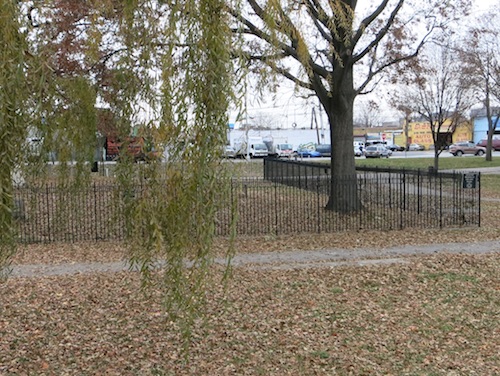
Though long-neglected, tombstones still stand in the white people's cemetery.
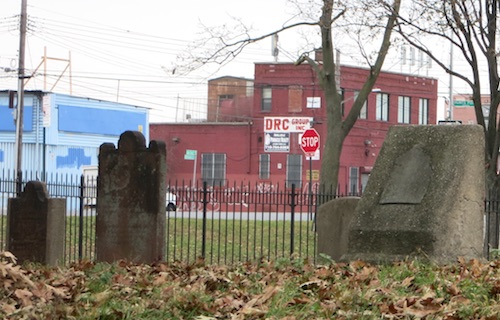
Hunts Point, best known for its produce and fish markets, is a desolate neighborhood on weekends, and besides us there wasn't a soul – well, not a corporeal soul, anyway – in or around the park on a recent windswept December Saturday. Buried here are members of the old landowning families, notably the Hunts ("Hunts Point"), Leggetts, and Willets.
Also here is Joseph Rodman Drake, who gave his name to the park. Trained as a doctor, he is remembered as a noted poet of the early 19th century whose "verse made reference to the natural beauty of the Bronx," as the historic sign says.
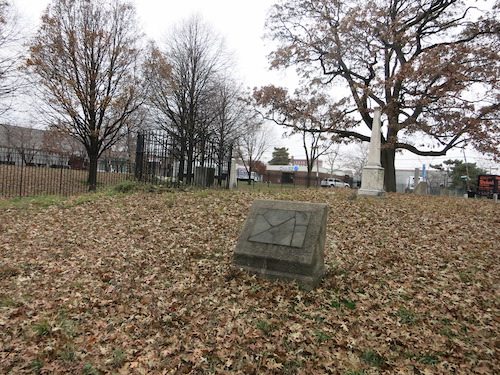
The nearly obliterated lettering on this stone in the cemetery memorializes Thomas Hunt, Cornelius Willet, and John Leggett.
Forty-four enslaved Africans lived on the Hunts Point peninsula in 1800. Somewhere in this park, outside the cemetery, beneath the trees that include a handsome willow and several sweetgums, lie the remains of up to 11 of them, rediscovered just a few years ago by local students from P.S. 48, also known as the Joseph Rodman Drake School.

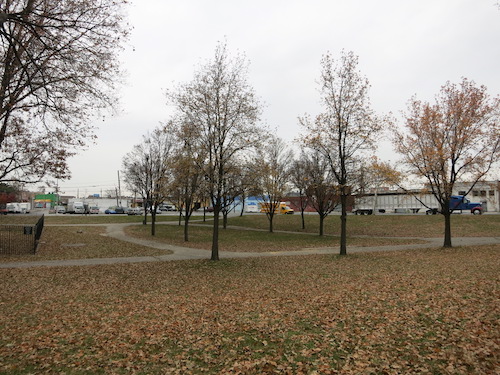
An earlier generation of kids from the same school planted a mighty oak in the corner of the white people's cemetery. It's nice to see a different and once-forgotten aspect of this area's history being recognized today.
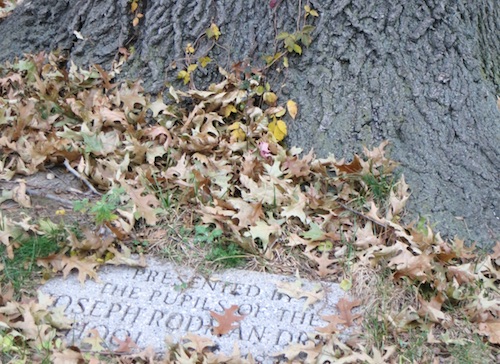
After writing poems such as "The Culprit Fay," "The American Flag," and "Bronx" ("Yet I will look upon thy face again / My own romantic Bronx, and it will be / A face more pleasant than the face of men"), Drake died of tuberculosis in 1820 at just 25 years old. Edgar Allen Poe, himself a longtime resident of the Bronx, had been a big fan.
"The Culprit Fay," a narrative poem of over 600 lines, predates Christina Rossetti's far better-known "Goblin Market," on a similar theme, by decades. Here's one passage:
The stars are on the moving stream,
And fling, as its ripples gently flow,
A burnished length of wavy beam
In an eel-like, spiral line below;
The winds are whist, and the owl is still;
The bat in the shelvy rock is hid;
And naught is heard on the lonely hill
But the cricket's chirp, and the answer shrill
Of the gauze-winged katydid;
And the plaint of the wailing whippoorwill,
Who moans unseen, and ceaseless sings
Ever a note of wail and woe,
Till morning spreads her rosy wings,
And earth and sky in her glances glow.
After a lot of faery drama, the poem ends with the magical sprites having left the scene:
The hill-tops gleam in morning's spring,
The skylark shakes his dappled wing,
The day-glimpse glimmers on the lawn,
The cock has crowed, and the fays are gone.
Doesn't sound much like the Bronx today. But a fence around a nearby vacant lot – or is it? – bears signs that the fays of old may still hover in the neighborhood.
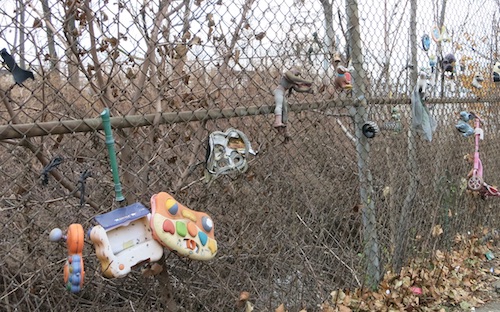
Faeries or no, poetry lives on in the poet Drake's park. The New York Shakespeare Exchange's Sonnet Project paid a recent visit.
After tramping around for a while, wondering if and when funding will be made available to create the proposed memorial at the site of the Hunts Point Slave Burial Ground, we, like the fays, left the scene. I'll leave you with a video from the Hunts Point Slave Burial Ground Project.
All photos © Critical Lens Media
No comments:
Post a Comment